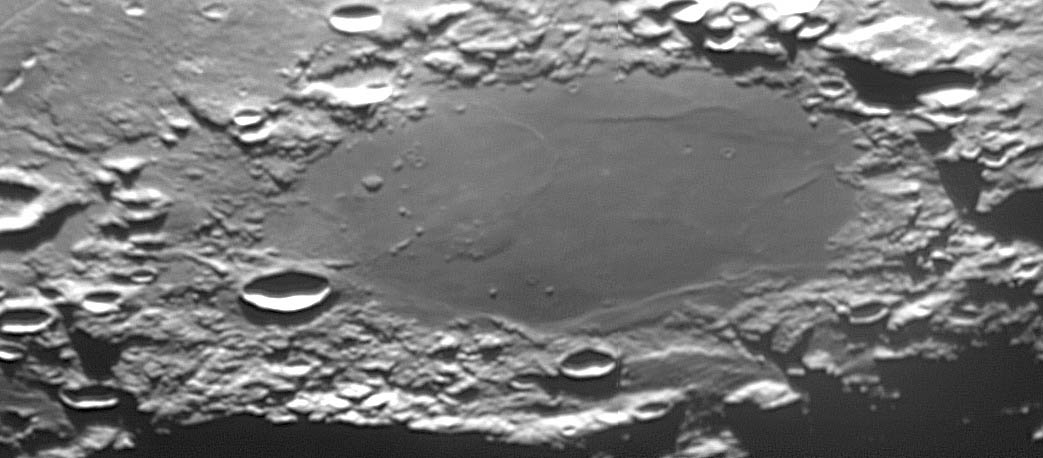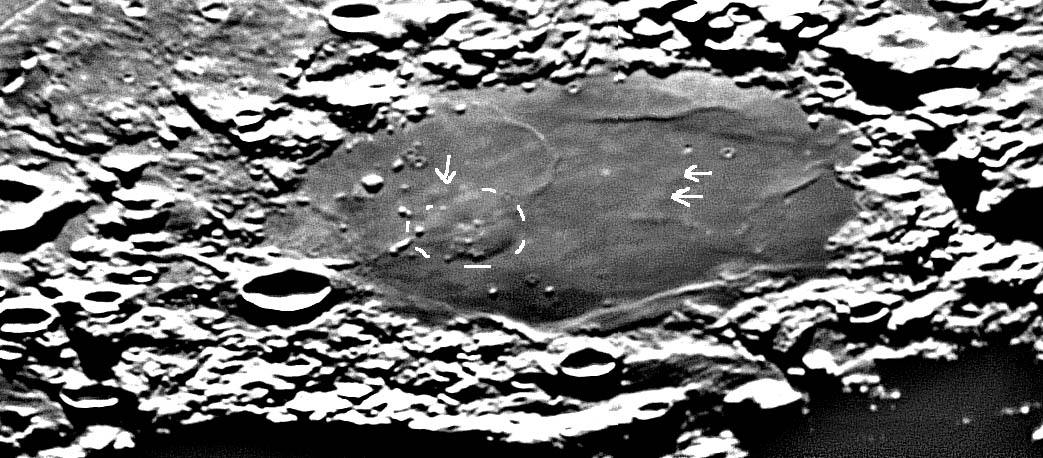May 5, 2005
Grimaldi Dome
Image Credit: K.C. Pau |
|
Grimaldi Dome Grimaldi is a small impact basin always seen as a chubby ellipse because of its location near the western limb. It is more easily recognized when the sun is high and its mare patch makes a distinctive dark spot. With a lower sun, Grimaldis mare patch is seen to be relatively smooth with a cluster of small hills to the north. But with even lower sun and larger image scale as in KCs wonderful image above, more subtle features become visible. There are two or three ghost craters whose partial rims appear as arcuate mare ridges. But most interesting is the complexity of the well known dome on the left (north) side of the image. This dome is about 22 km wide and its west (bottom) side seems steeper than its east edge. A few bright peaks protrude slightly above the dome and a small flat-floored depression occurs just off-center. This Grimaldi dome looks multi-lobed like a heart, but none of it except the bright hills are visible on the higher sun Lunar Orbiter IV view. On the strongly stretched view (mouseover) there are some other very small dome-like bumps, one near the heart dome and two or three nearer the ghost crater in the southern half of the floor. And have you noticed that this patch of maria has no name? Since Grimaldi is an impact basin it is obvious that the name must be Mare Grimaldi! Or maybe, since it is a small basin, Lacus Grimaldi. Technical Details: Related Links: Yesterday's LPOD: Musical Nomenclature Tomorrow's LPOD: A Handy New Map |
|
Author & Editor: |
COMMENTS?
Register, Log in, and join in the comments.





